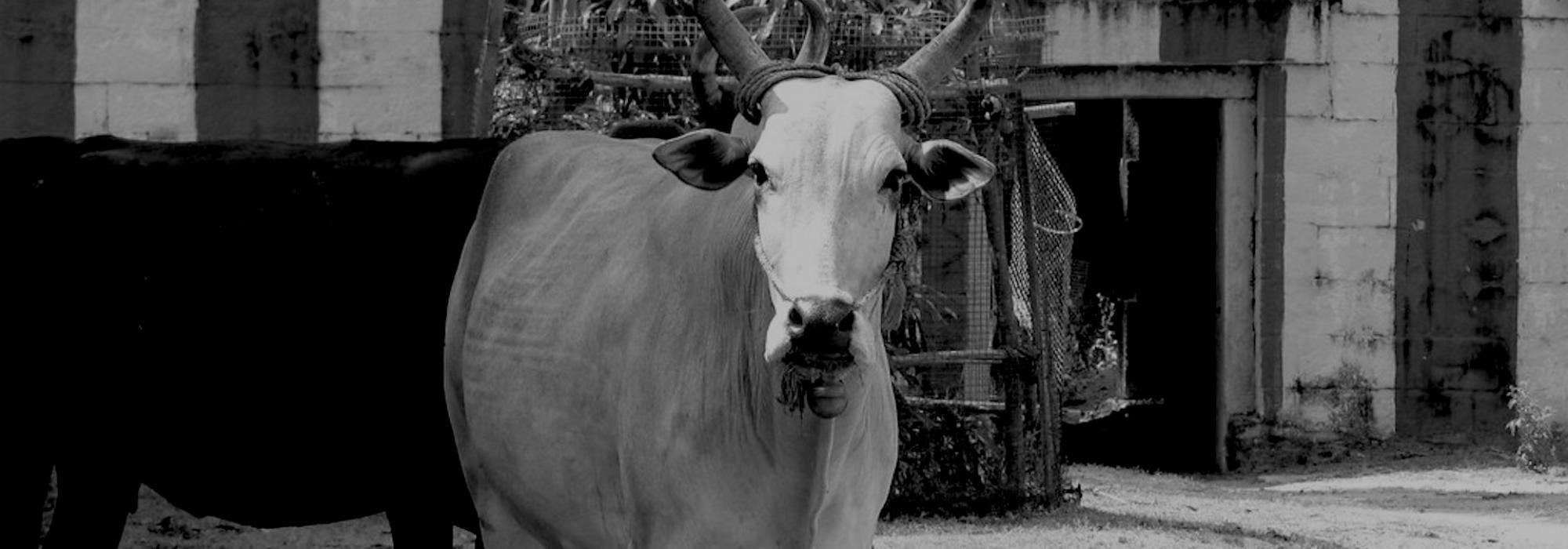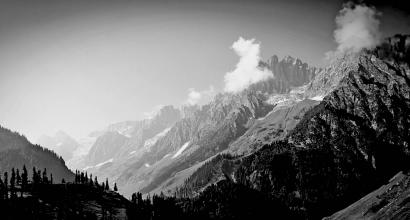One of the greatest strengths and talent of Dr. S.L. Bhyrappa is his extraordinary prowess in creating memorable characters that linger fresh in the connoisseur’s mind for years. This follows the classical Indian epic tradition where the reader and listener becomes a participant in the drama which sounds more real, even surreal at a level. Mahabharata’s Bhima not only epitomizes indomitable strength but its judicious, appropriate use. Sri Rama is, as the saying goes, vigrahavaan dharmah. Dr. Bhyrappa accomplishes pretty much the same feat in the contemporary annals and modern idiom.
Even with a rudimentary familiarity of his works, one can easily list some of his most distinctive characters: Srinivasa Shrotri, Katyayini, Nanjamma, Chennigaraya, Melagiri Gowda, Satyabhama, Javaraya, Manjayya, Savitri, Chandrika, Ravindra, Kanti, Hemant Honnatti, Mohan Lal, Ramkumari, Razia (or Lakshmi), Hamdullah, and Prof. Sastri. Even familiar characters in his historicals come alive with a different dimension for example, in the blazing Kumarilabhatta in Saartha and an Aurangzeb who permeates Aavarana without directly entering the story.
The same applies to the five principal characters in Tabbaliyu Neenaade Magane: the elder Kalinga Gowda, his grandson, Hilda, Venkataramana and Tayavva. We have already examined the first three characters in the previous instalments of this series.
Venkataramana typifies Dr. Bhyrappa’s characterization of a person who is innately spiritual and deeply moored in his ancient, unbroken Sanatana tradition from which he derives strength, courage and succor. As a respecter of this tradition, he carries on his life with a sense of duty, as a pious performance of Karma in alignment with Dharma. Like every normal person, he is concerned with the regular worries and cares about earning a living and providing for his family. However, when a conflict arises between his profession (i.e. job) in worldly life and Dharma, he chooses the latter by forgoing the former. The decision to choose it is informed by the selfsame Dharma.
Venkataramana perhaps symbolizes the last in an ancient tradition where Purohitas played multiple parts in the Sanatana society: officiating various rituals, performing Pujas, festivals, and acted as spiritual and moral guides to the entire village. They offered solace, advice, and guidance to different families and to some families, they were akin to a “personal” spiritual guide, a bond that sustained for more than six or seven generations.
Venkataramana, like his father, Narasimha Jois, is the personal/family Purohita to Kalinga Gowda’s lineage. The bond between the two families is deep, lifelong, and imbued with affection, respect, compassion and genuine care. Both men stand by each other in difficulties and share happiness. A death in one person’s home is regarded as a mourning in both families. When Narasimha Jois dies early, the elder Kalinga Gowda supports the student Venkataramana with some money and provides provisions for his family. When the villagefolk of Kalenahalli face a problem, both Narasimha Jois and later, Venkatramana rush to their support.
Indeed, this portrayal of the rural Hindu society simultaneously provides a brilliant, real-life counterpunch to social and anthropological theorists of Hindu society as nothing but caste oppression. If this is in Tabbali, Dr. Bhyrappa’s other classic Daatu shows the brutal and sad reality of this theoretical perversion applied to real societies and people. The harmony of Kalenahalli is shattered in a similar village, Tirumalapura, where the landed “castes” spot immense political potential by declaring themselves as backward and launching a destructive anti-Brahmin rhetoric and the Brahmins show them the way by twisting their own Dharmashastras for personal gain.
The manner in which Dr. Bhyrappa fleshes out Venkatramana’s character is a great study in character development in fiction. It has a languid quality of a quiet rural, late afternoon by the lakeside as the afternoon slowly lapses into a soothing evening.
The Jois’ son Venkataramana was three years older than Putta Kalinga. He’s now studying…in the third year in the Taluk school. He has already undergone the Sacred Thread ceremony. He’s also undergone Vedic education to a good extent from his father. For food, he takes bhiksha and stays in the Mantapa located in the compound of the Narasimha temple. The Mantapa, which has doors and locks also houses four to six other Brahmin students. He also studies in the Sanskrit classes conducted within the temple in both morning and evening. The front portion of his scalp cleanly shaven and the long hair at the back tied in a thick tuft, his forehead sporting the Gopichandana, his left hand carrying a white knapsack and his right a broth-bowl—when he goes around for bhiksha like this, he resembles a Vatu, a student studying in the Ashrams of the Rishis of yore… His father had admitted him to the Mysore Sanskrit Patashala—School—for advanced Vedic education. It seems they teach him astrology and Vedic rituals in the traditional manner.
This is how the author germinates the Sthayi Bhava (basic element) of Venkataramana’s character and develops it almost in a systematic fashion. Venkataramana has also undergone enough “English education” to understand Western ideas and fashions at an intellectual level, enough to offer powerful, logical counters to someone like Hilda, as we’ve noted earlier. He also keeps abreast of the latest developments in the West—especially America—by reading newspapers and science articles aimed at a general audience.
He retains his childhood friendship with the grandson Kalinga largely intact even after he returns from America. Indeed, he is instrumental in convincing the elder Kalinga Gowda to send his grandson there for higher studies. As the Purohita for the Gowda lineage, he is more than a well-wisher to the family and regards it his duty to guide them in matters of Dharma and keeps a close watch on his now-Americianised childhood friend’s actions and behaviour. The rift begins when Kalinga doesn’t show even a genuine acceptance of the traditional ways of his family and the village life.
Central to this rift is Kalinga’s attitude towards and treatment of the cows in his own barn. The first blow is delivered when he sells off aged cattle to a butcher, and matters proceed and hurtle towards the inevitable physical clash as we shall see. Kalinga’s American outlook regards the cow as something to be owned whereas his grandfather regards it as a Devi and aspires to be reborn as a cow. Quite naturally, Venkataramana regards this as a criminal violation of Dharma symbolized by the cow.
Another facet of the same clash is seen in the manner in which Kalinga regards the Punyakoti Temple his grandfather had built and appointed Venkataramana as its Archaka and granted him some land from which he could earn his livelihood. The younger Kalinga regards his temple as his personal property, and the clash that ensues forms one of the brilliant cruxes in Tabbali, which we shall examine later. Even in this case, Punyakoti the cow is used as a powerful and moving motif.
To be continued










































